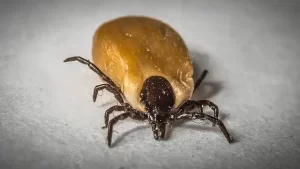LGGs: Proton therapy for low-grade glioma
- Engineered Soybeans with Pig Protein: A Promising Alternative or Pandora’s Dish?
- Severe Fever with Thrombocytopenia Syndrome (SFTS): A Tick-Borne Threat with High Mortality
- Why Isolating Bananas Extends Their Shelf Life?
- This common vitamin benefits the brain and prevents cognitive decline
- New report reveals Nestlé adding sugar to infant formula sold in poor countries
- Did Cloud Seeding Unleash a Deluge in Dubai?
LGGs: Proton therapy for low-grade glioma
LGGs: Proton therapy for low-grade glioma. Is proton therapy for low-grade gliomas effective?
Low-grade gliomas (LGGs) are the most common brain tumors in children, with approximately 800 confirmed cases each year in the United States.

The treatment of these tumors depends on several factors, including host factors (such as the patient’s age and comorbidities) and disease characteristics (such as the location and histological subtype of the tumor).
Since the long-term survival rate exceeds 90%, treatment options need to be carefully considered to minimize the late toxicity of surgery, chemotherapy, and irradiation.
There are several studies trying to mitigate the effects of late radiation toxicity by selectively avoiding radiation, systematically reducing the target volume, and using advanced radiation techniques. Among these radiation techniques, proton therapy is particularly promising because it allows reduction of low and Of course, boron neutron capture (BNCT) has also shown high potential for target volumes outside normal tissues with medium radiation doses. Currently, according to the U.S. radiation oncology model policy, low-grade glioma in children is considered to be the first group of indications for proton therapy, and has become the third most common type of brain tumor in children worldwide.
Despite this, only small heterogeneous studies describing patient outcomes have recently been published. In view of the low probability of randomized research on radiation methods for children with low-grade gliomas, the results of research continue to help determine the treatment ratio of proton therapy relative to other techniques and improve its therapeutic value relative to surgery and chemotherapy.
The treatment of LGGs in children is an evolving and often controversial topic. Prospective and retrospective studies have shown that radiotherapy provides effective, long-term disease control for most children, but the awareness of radiotoxicity has generated limited enthusiasm for its use, especially for young patients.
Age is also a major factor in the debate over the status of radiotherapy versus chemotherapy and new targeted drugs in the treatment algorithm. However, it is generally believed that there are still hundreds of children with unresectable LGGs in the world who need radiotherapy. In order to reduce the radiation toxicity of these patients, some dosimetry and small retrospective studies have shown that proton therapy can reduce the low/medium radiation dose to the developing brain tissue.
This research provides valuable new data for disease control after proton therapy. In addition, regardless of the radiation method, as the largest prospective study describing the results of children receiving low-grade glioma radiation therapy, our experience provides a reference for the general treatment of this common childhood brain tumor.
The following are our findings.
Compared with contemporary photon therapy technology, can proton therapy provide comparable disease control?
Modern studies from the United States and Europe are almost entirely related to photon therapy. Reports show that the 5-year progression-free survival rate is between 56% and 87%, and the overall survival rate is between 90% and 100%. Only one report of 15 patients described the results of 5-year tumor control after proton therapy.
Although this is a relatively small series of 32 patients, the results are encouraging, with a progression-free survival rate of 89.7% and an overall survival rate. Is 100%.
The progression-free survival rate and overall survival rate of our 174 patients were 84% and 92%, respectively.
In total, the results of nearly 200 children treated by these two institutions indicate that the dose accuracy of proton therapy has nothing to do with increasing the risk of local failure or missed diagnosis.
Regardless of the open shooting method, what does this large group of patients teach us in terms of risk factors and treatment techniques?
In addition to its value to our understanding of proton therapy, this large cohort allows analysis to further inform patients of risk factors and optimal treatment parameters across models. First, our patients are treated with 5mm CTV margins, which are 50% smaller than the 10mm margins reported in the previous large series.
This small geometric margin, combined with the precise dosimetry margin of proton therapy, has nothing to do with increasing the risk of local failure.
It is worth noting that our research results also show that radiation dose affects tumor control, and 54 GyRBE may have advantages compared with low doses. Although the subjects of the study were adults, the 28 dose-responses in children with low LGG have not been discussed in detail.
This is mainly due to the uniformity of doses in large studies and the lack of statistical power in small studies.
We have also observed disease control in patients with brain stem and spinal cord tumors. Although there may be different glioma variants in these sites, it is more likely that the location of the tumor is confused by the dose effect: patients with brainstem or spinal cord tumors receive less 54 GyRBE treatment, and this low dose may be Reasons for poor results.
This is the treatment challenge; midline tumors and brainstem tumors seem to have a higher risk of toxicity, thus limiting the choice of tissue dose increase in PTV.
Sum up
Because the long-term survival time of low-grade glioma in children is longer, doctors will definitely choose better treatment options to benefit the patient, because the side effects of treatment may be permanent or life-threatening, including neurocognitive disorders , Nerve dysfunction, neurovascular injury, neuroendocrine defect and malignant tumor surgery, radiotherapy and chemotherapy can be used alone or in combination, and different treatment ratios are provided according to different environments.
Therefore, the establishment of ideal treatment options and sequencing has historically been a controversial area, posed challenges, and the emergence of further complex molecular targets. At present, the first-line treatment for low-grade gliomas is still a total resection. Some patients with WHO grade 1 gliomas of Prof. INC. Bart Langfei do not even need to receive follow-up treatment after they have been fully resectioned.
(source:internet, reference only)
Disclaimer of medicaltrend.org



